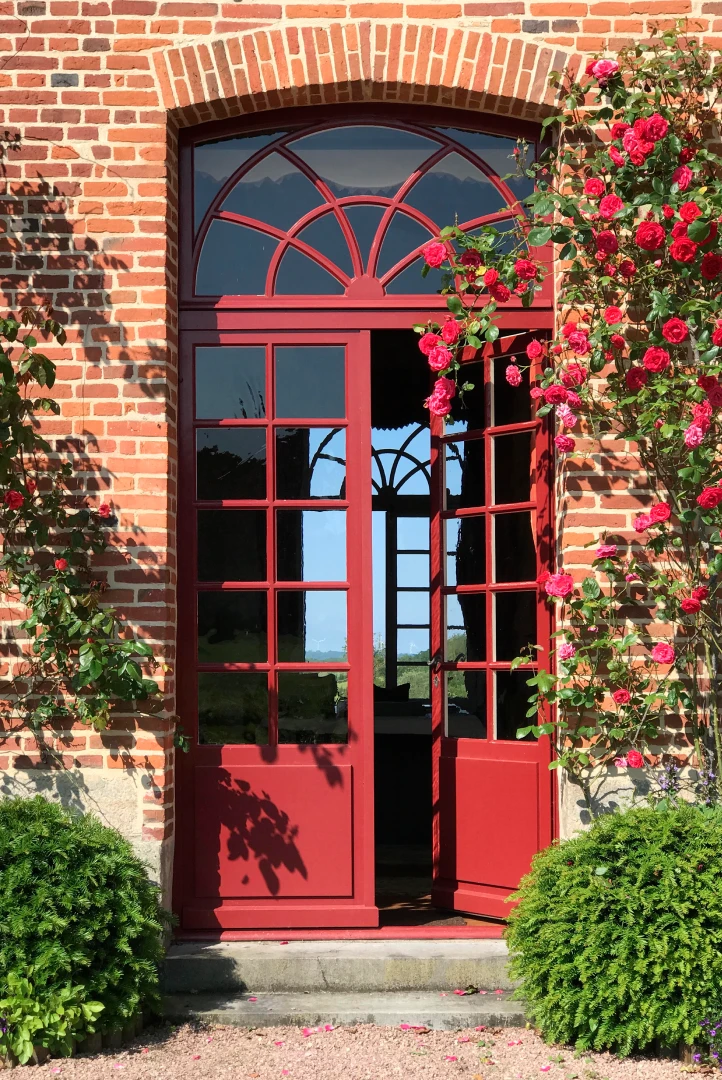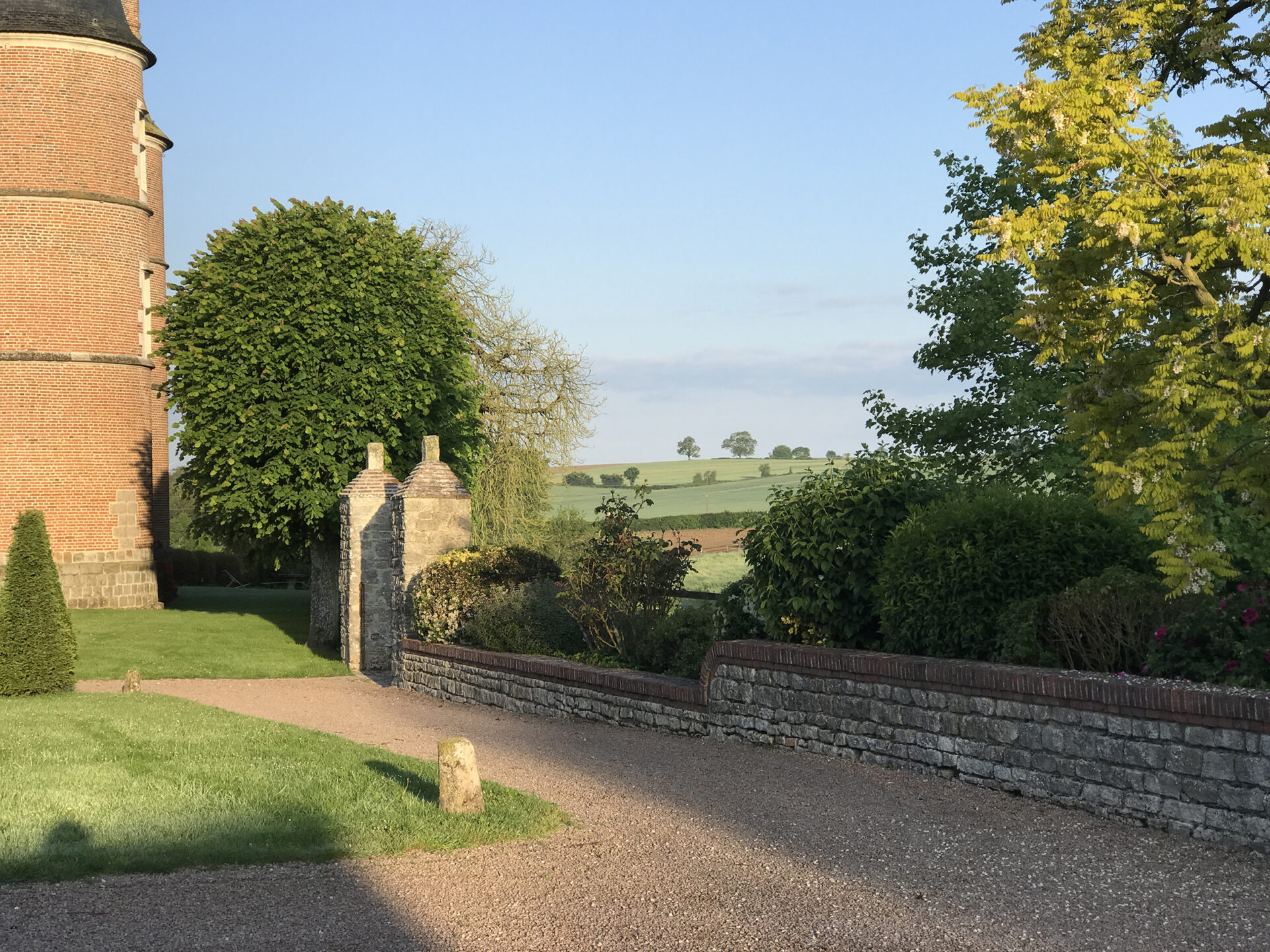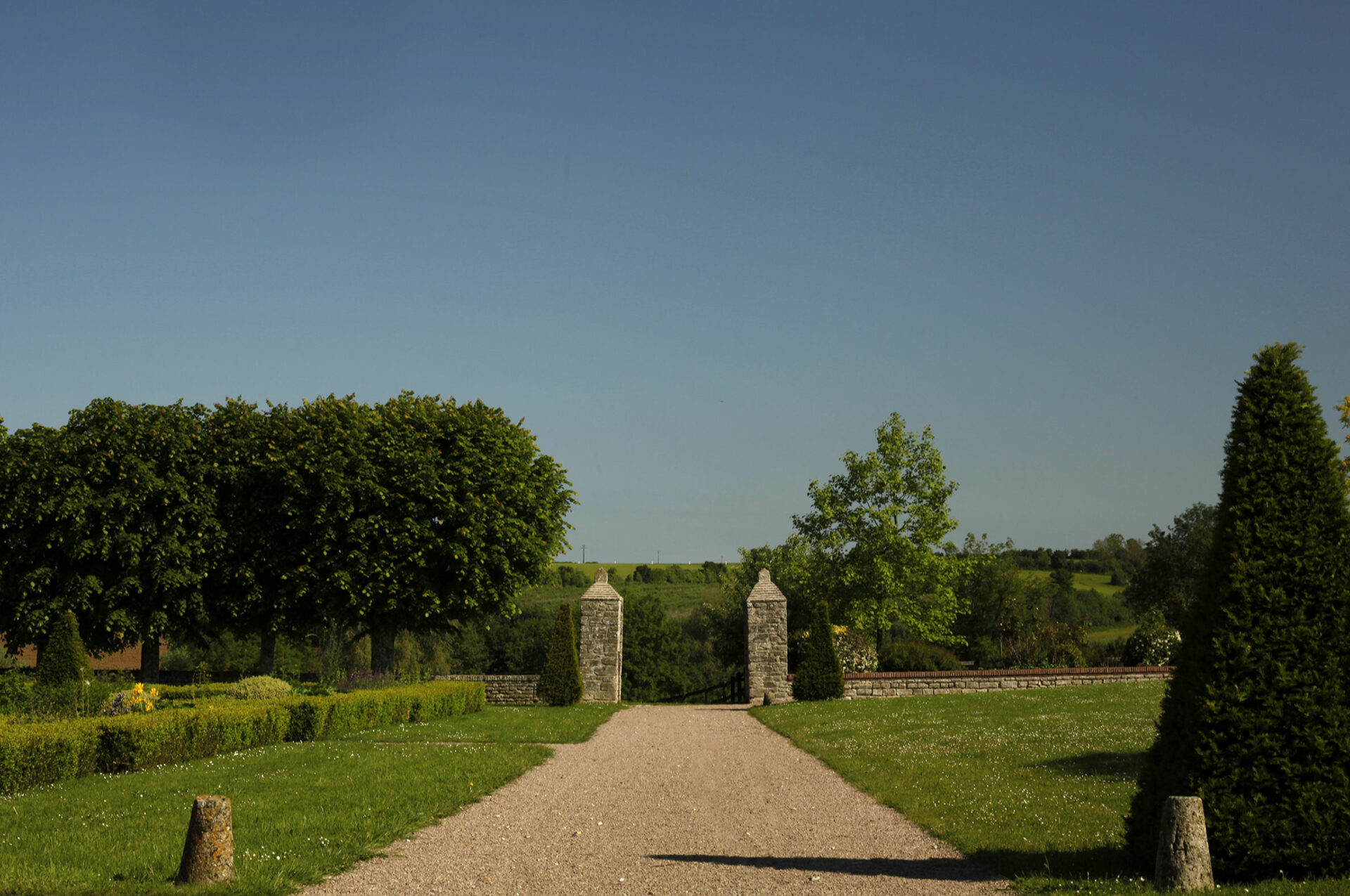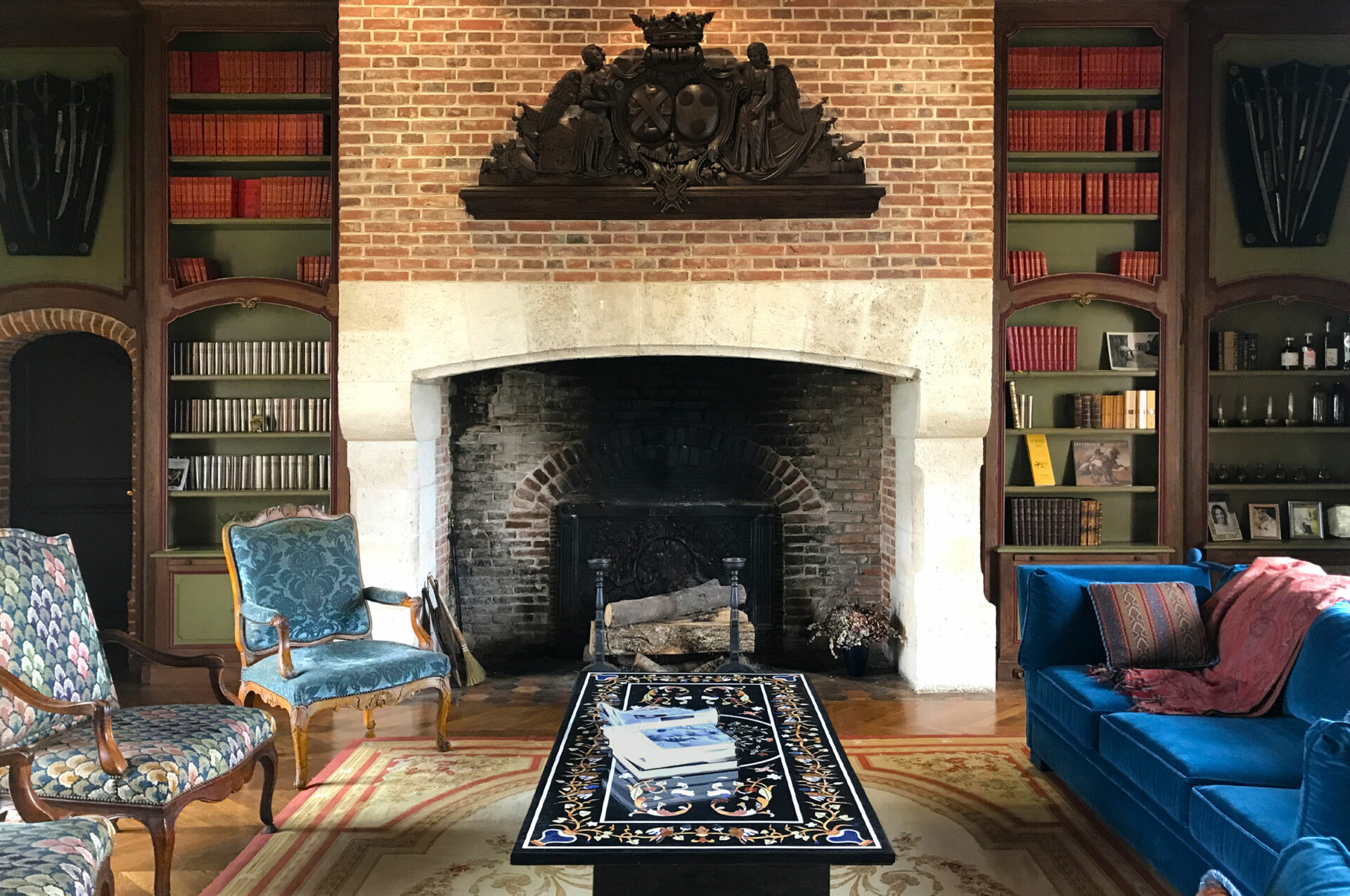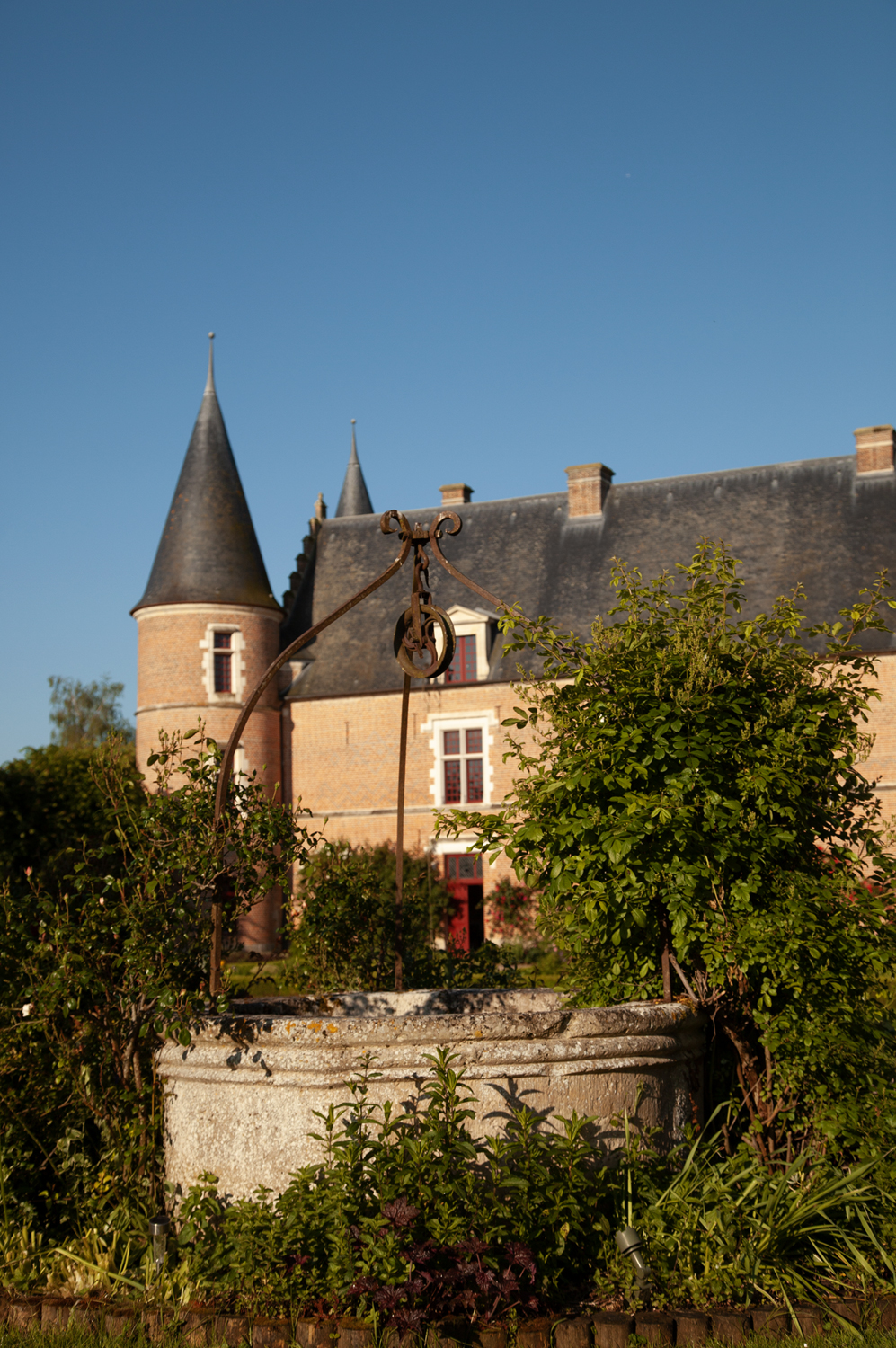Château d’Hannaches was born of the encounter between the land of Pays de Bray, on the border of Normandy and Picardie, and Georges Paléologue de Bissipat, a Byzantine émigré who fled Constantinople in 1453 after it was taken by the Turks. Some 680 years old, Château d’Hannaches tells a very contemporary story, blending past and present.
The Château

Spirit of the venue
Hannaches, the ultimate in conviviality
Hannaches offers nothing sophisticated or ostentatious. It is designed to reflect the simplicity of the materials that make up the venue (brick walls, antique tile floors, wooden beams) and give it its warmth. Simple activities, close to the surrounding outdoors. The luxury of wide-open spaces and breathtaking views. Horses on the grounds.
Hannaches is designed to be the ultimate place of conviviality, welcoming a single group at a time, so that its members can make the place their own and enjoy it in private. This gives each retreat group its own personal touch in optimal privacy. During their stay, each member must feel as if they were inhabiting Hannaches, and let themselves be inhabited by it.
the garden

The French-style garden
At the front of the château, the formal garden is a sight to behold all year round.
The rest of the garden is inspired by English tradition, with flowering mixed-borders that add color to and accompany each season.
Climbing roses frame the front windows, adding a romantic touch and creating a perfect harmony between architecture and nature.

Château's history
Georges Paléologue de Bissipat

Georges Paléologue de Bissipat, known as Georges the Greek (Georges le Grec), fled Constantinople after its capture by the Turks, taking refuge in France. He entered the service of French King Charles VII, first as a knight, adviser and chamberlain to the king, then as a pirate, displaying his skill at sea.
In 1477, Louis XI authorized him to acquire a lord’s estate, following which he built Château d’Hannaches, probably on the remains of an ancient fortified castle.
Legend would have it that a sick and dying Louis XI sent Georges the Greek to lead an expedition off the coast of Senegal to bring back a tortoise from the island of Maio as a remedy for his ailment. The animal’s blood, in which the king had to bathe before eating its flesh, was supposed to cure him.

Pays de Bray
It was from this hilly, damp land, made of clay mud (“brai” or “bray”), amidst fields of hemp—the land of cider, calvados and pommeau alcohol (and who’d have guessed it, Petit-Suisse cheese!)—that the edifice was erected, made of bricks, wood and Angers tiles, now listed as a national heritage site. Its facade is adorned with waves—representing the sea—a heart—the heraldic symbol of courage—and a Star of David.
 Horses
Horses
Hectares of pastures crisscrossed by a stream, grazed by show horses, young colts, those retired and those still competing.
 Prince’s guestroom
Prince’s guestroom
54 m2 | 2 persons | bathtub | view out on meadow & garden
With its four-poster bed and tapestry, the Prince’s guestroom stands apart with its picturesque Haute Époque style, giving you a unique and singular experience.
 Private events
Private events
Château d’Hannaches, an intimate, bucolic estate, is the ideal place to celebrate unforgettable moments with family or friends, and feel right at home in your own country house.
